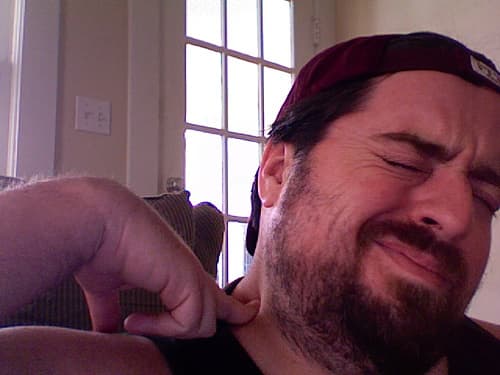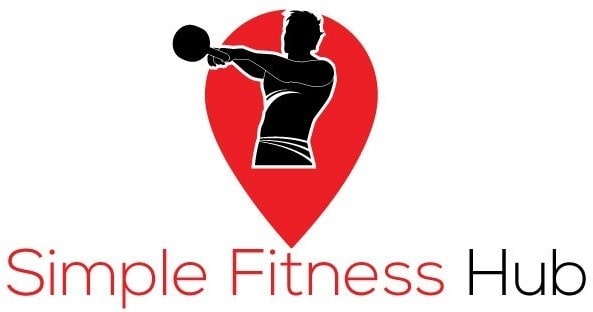
If you are like me, sometimes things go awry with your body. And while, there are some great resources out there to help you work out those kinks (like The Ready State), but what if those irritating issues hang around and don’t resolve themselves? Where should you turn for professional advice and assistance?
To help us weave through the maze of therapies available to athletes, I decided to ask my friend Patrick Ward for his help. Patrick has built an amazing practice by combining strength and conditioning coaching, personal training, and massage therapy. Specifically related to bodywork, Patrick is certified in Neuromuscular Therapy (NMT), Active Release Techniques (ART), and Functional Movement Screen (FMS). With this holistic background, Patrick seemed like the perfect person to provide insight into athletic and sports massage therapy.
Were you already a strength coach when you became a certified massage therapist?
Yes, I was a strength coach way before I was a massage therapist. I actually first got into massage therapy after reading Charlie Francis’ book, Training for Speed, as he used therapy a lot for his athletes. After that I started getting weekly massages and realized that I felt pretty good! I did realize, however, that most of the time when I referred a client for massage therapy with specific instructions in terms of muscles to be worked, the therapists usually didn’t have a strong command of anatomy and didn’t do a good job of targeting these structures or understanding how they were influenced by training and sport. This made me interested in going to get a massage license as well as seeing a physiotherapist named Willem Kramer do some work. After seeing what he was doing, I was sold! This is what I felt I needed to do.
Are most of your massage clients also clients of your personal training business?
My clients get it all. I don’t have normal “massage” clients in the sense of people coming in and getting on the table, under a sheet, for 60-120 minutes. Most of my clients are there to train, and we use soft tissue therapy as an adjunct to training when we need to – to deal with aches and pain, coming back from injuries, in conjunction with their physical therapy or chiropractic treatments, or to enhance/facilitate recovery from hard training or competition.
What are the most common issues you see with non-elite athletes in your practice?
Their level of outside stressors is much higher. Most professional athletes have the benefit of basically taking care of themself year round without having to go out and have a day job and deal with trying to not only work 40-50hrs per week but also train and practice. They have a lot more time that they can devote to training and therapy and can come several times a week for these things to ensure that their body is functioning well and they are developing higher levels of fitness. General population folks usually have two, maybe three, days per week that they can devote to their program and this is usually fit in around all the rigors of the day/week – work, taking the kids to sports practice, business meetings, business dinners out (usually filled with alcohol and poor food choices), etc. So, they are fighting an uphill battle and can sometimes get discouraged when they see how fast an elite athlete can recover and get in shape. But they have to remember that they are comparing apples to oranges as the elite athlete has been there 5-6 days a week and can devote a lot more time to this stuff.
Can you explain the different modalities you practice and where each one might be appropriate?
Honestly, there are many tools out there from trigger point therapy to fascial manipulation to ART or neuromuscular therapy. All of them are good and all of them have their place! Not every tool will work for every person and each person has different needs that have to be met. This is a problem with people that are “one-trick-ponies” and only do a single therapy or modality. If all you have is a hammer then everything will look like a nail. Being diverse is important as it allows you to be able to help a lot more people.
What is the “Functional Movement Screen” and how do you apply it?
The Functional Movement Screen is a seven test screen developed by Gray Cook and Lee Burton which aids trainers, therapists, or clinicians in gathering a baseline understanding of how their client moves (or doesn’t move) and whether or not there is pain with movement. From there the appropriate course of action can be taken which can be either referring the client to a medical professional for further evaluation, or exercise prescription to address the client’s weakest link.
I apply the Functional Movement Screen by using it as an initial screen to gather information about the client and find out things about their body that they may not know about or they may have forgotten to tell me. Based on the information from the screen, I have a long series of exercise progressions which address specific aspects of each test, and I simply select the most appropriate. Additionally, taking the most dysfunctional test from the individual’s screen, I can further break down specific joint structures or muscles that may be inhibiting the appropriate movement/response and use massage therapy techniques to treat those before re-testing the movement to see what sort of result I got (or didn’t get), which will further drive my process.
What advice can you give about selecting a massage therapist?
To obtain a therapy license in the states is not very rigorous, which makes the industry watered down with a lot of nonsense. In choosing a therapist I would say first look at their educational background. Also, ask them what a treatment consists of and if they do not mention first doing a thorough assessment then they may not be the person for you. Most therapists just rub a bunch of oil on your back in a very general manner (not that this is a bad thing, but if you are looking for more focal work then you need to find someone who is more specific). Finally, see if the therapist knows anything about the training process. They don’t have to be a trainer but hopefully they understand enough about training to have an idea about how what they are doing will fit into your overall program and goals.
Lastly, do you have thoughts on when it is appropriate to see a sports massage therapist vs. a chiropractor vs. a physical therapist?
Obviously a chiropractor and a physical therapist are part of the medical community in this country so if you have a medical condition that needs to be dealt with, especially orthopedic issues, you should be seeing a medical professional. Massage therapy education does not go over diagnostic criteria and it does not provide the student with the differential diagnosis skills that a chiropractor or physical therapist will have. Therefore, getting looked at by a medical professional is important and oftentimes they may give you the okay to see a massage therapist as an adjunct to their treatment.
The massage therapist can be helpful in dealing with day-to-day issues of training, recovery from training/competition, and injury prevention in terms of addressing restricted areas of the body that may be limiting normal movement. I do get referrals from physical therapists and chiropractors as well, as they might not have the amount of time that they would like with a patient to really get their hands on them (due to the way medical billing is these days and how clinics have to operate in order to make money) and they feel comfortable referring the client over to me. Finally, there are times when I get people who are at the end of their line. They have gone through years of doctors, physical therapy, and chiropractic treatment and nothing has given them relief or gotten them back on track. One way or another they find themselves in my facility and this can be a good thing as I feel that all the major stuff has been ruled out by the medical professionals (of course I look over their health history, consult any of their medical professionals if need be, and refer them back to a medical professional if I think it is appropriate). I can pretty much look at them with a different set of eyes and maybe do things a little differently than other professionals they have seen.
Thanks Patrick!
